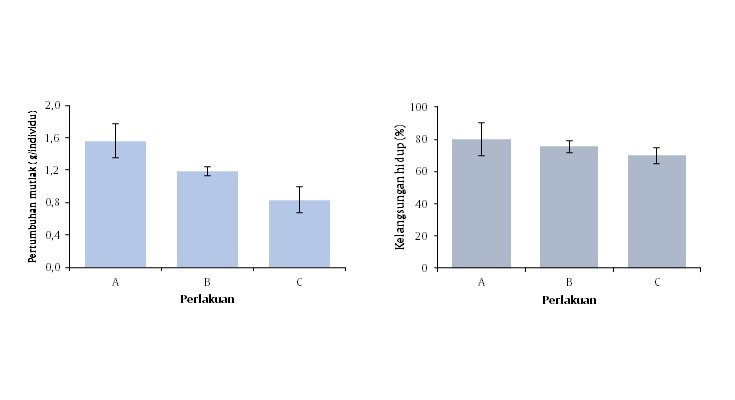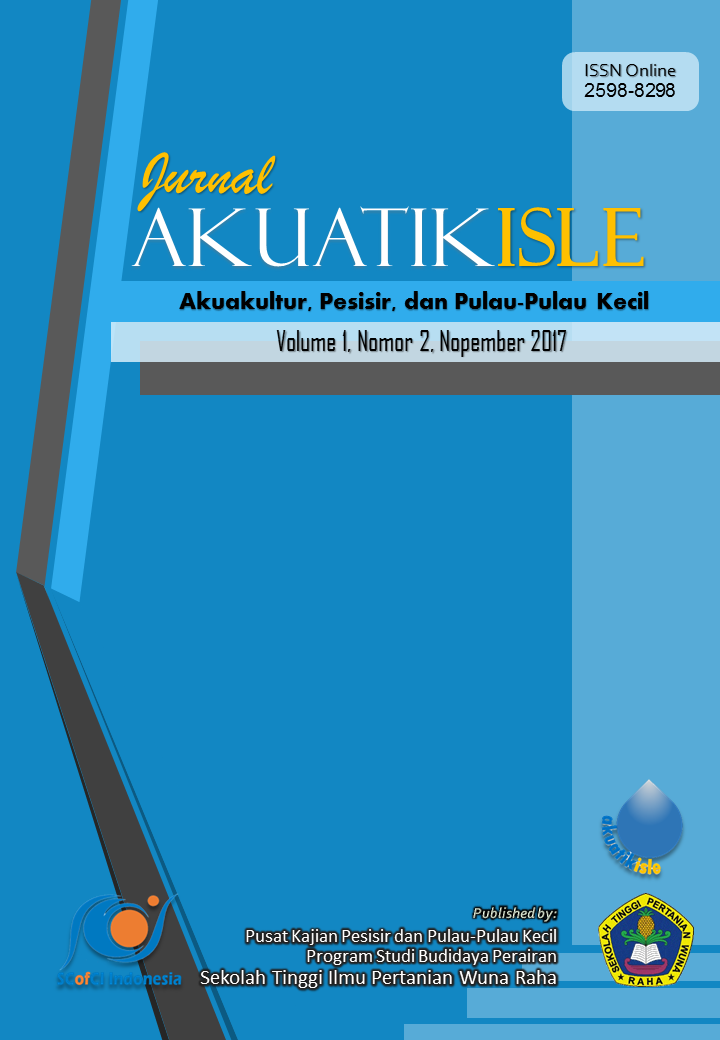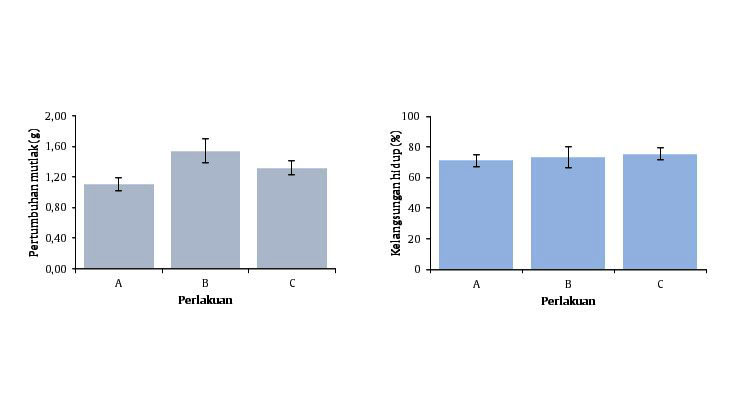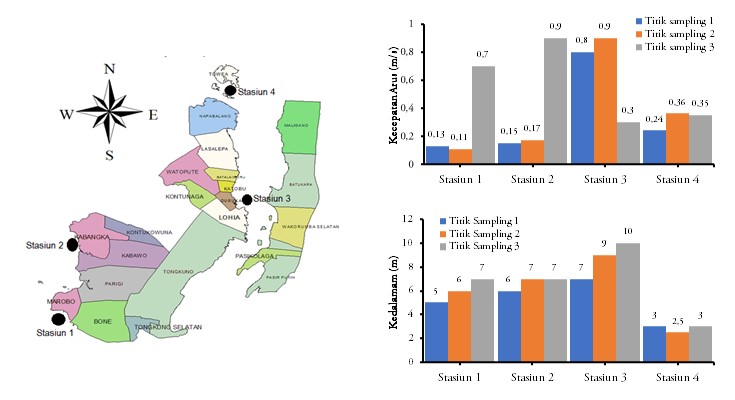
Growth and survival rate of white shrimp (Litopenaeus vannamei) at different density
Vaname shrimp is one of the fishery products that are expected to produce foreign exchange for the country besides tiger shrimp. One factor that can affect the growth and the production of vaname shrimp culture is dense stocking. The research was conducted in October-December 2016 at the Balai Benih Ikan Pantai (BBIP) Ghonebalano, aims to determine the effect of different stocking density on the growth and survival of vaname shrimp. The research was using Completely Randomized Design with three treatment levels of density, i.e. treatment A = 10 individuals per container, treatment B = 15 individuals per container and treatment C = 20 individuals per container and three replications. The results showed that the highest growth was obtained in treatment A which was 1,563 g/individuals, compared with treatment B (1.189 g/individuals) and C treatment (0.834 g/individuals). Survival rate in treatment A is 80.00%, B treatment equal to 75,56% and treatment C equal to 70,00%. Analysis of variance at 95% confidence level (α0.05) showed that the different density had a significant effect on growth, but had no significant effect on survival rate of the vaname shrimp larvae.
- Abdul RakhfidAbdulRakhfid
- Nur BayaNurBaya
- Muh BakriMuhBakri
- Fendi FendiFendi



